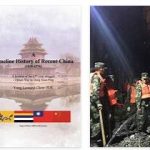China’s transformation into an industrialized nation stands as one of the most remarkable economic stories of the 20th and 21st centuries. From a predominantly agrarian society, China has evolved into the world’s second-largest economy, driven by rapid industrialization, technological advancements, and strategic economic policies. In this comprehensive exploration, we will delve into the journey of China as an industrialized country, examining key milestones, challenges faced, the impact on society, and the trajectory for continued development.
1. Historical Context of China’s Industrialization:
a. Pre-Reform Era: Before the economic reforms initiated by Deng Xiaoping in the late 1970s, China’s economy was largely centralized and planned. The country faced economic challenges, including low productivity, limited foreign trade, and reliance on traditional agriculture.
b. Deng Xiaoping’s Reforms: Deng Xiaoping’s economic reforms, launched in 1978, marked a turning point for China. The shift towards a socialist market economy encouraged private enterprise, foreign investment, and the development of special economic zones, laying the foundation for industrialization.
c. Opening to the Global Economy: According to ITYPEAUTO.COM, China’s integration into the global economy played a crucial role in its industrialization. The country embraced export-oriented growth, becoming the “world’s factory” as it became a major player in global supply chains.
2. Key Milestones in China’s Industrialization:
a. Rise of Manufacturing: China’s manufacturing sector experienced unprecedented growth, becoming a global manufacturing hub. The production of goods ranging from textiles and electronics to machinery and automobiles contributed significantly to the country’s economic output.
b. Technological Advancements: Investments in research and development (R&D) propelled China into a technological powerhouse. The country made strides in areas such as telecommunications, artificial intelligence, and renewable energy, challenging traditional technological leaders.
c. Infrastructure Development: China’s industrialization was accompanied by massive infrastructure development. High-speed railways, modern highways, and expansive port facilities contributed to efficient transportation and connectivity, facilitating economic growth.
d. Urbanization and Migration: Industrialization spurred rapid urbanization as millions of rural residents migrated to cities in search of employment opportunities. This demographic shift transformed the landscape of Chinese cities and led to the creation of vast urban centers.
3. Industrial Sectors Driving Growth:
a. Manufacturing and Export: China’s manufacturing sector, encompassing textiles, electronics, and heavy machinery, became a global powerhouse. The country’s export-oriented model fueled economic growth and trade surpluses.
b. Technology and Innovation: China’s focus on technology and innovation elevated it to a position of global prominence. The development of 5G technology, advancements in artificial intelligence, and a burgeoning tech industry contributed to China’s status as a technological leader.
c. Heavy Industries: China invested heavily in heavy industries such as steel and construction materials. The rapid expansion of infrastructure projects and urbanization drove demand for these industries, contributing to economic growth.
d. Renewable Energy: Recognizing the importance of sustainable development, China prioritized the development of renewable energy sources. The country became a global leader in solar and wind energy production, addressing environmental concerns associated with rapid industrialization.
4. Challenges Faced by China as an Industrialized Country:
a. Environmental Concerns: The rapid industrialization in China led to environmental challenges, including air and water pollution. The country has acknowledged these issues and has implemented policies to address environmental degradation.
b. Economic Inequality: The benefits of industrialization have not been evenly distributed, leading to economic inequality. Disparities between urban and rural areas, as well as income inequality, present challenges for sustainable and inclusive development.
c. Aging Population: China’s industrialization has contributed to demographic shifts, including an aging population. The country faces challenges related to an increasing elderly population, healthcare demands, and pension system sustainability.
d. Trade Tensions: China’s rapid economic ascent has led to trade tensions with other major economies, particularly the United States. Disputes over intellectual property, market access, and trade imbalances have created challenges for China’s economic relations.
5. Social Impacts and Transformations:
a. Urbanization and Lifestyle Changes: Industrialization has reshaped the lifestyle and aspirations of the Chinese population. Urbanization has brought about changes in living standards, access to education, and consumer behaviors.
b. Technological Adoption: The widespread adoption of technology has transformed daily life in China. Mobile payment systems, e-commerce platforms, and digital communication tools have become integral aspects of Chinese society.
c. Educational Advancements: China’s emphasis on education and skill development has resulted in a highly educated workforce. The country produces a significant number of STEM graduates, contributing to its technological advancements.
d. Cultural Revival and Global Influence: As an industrialized nation, China has experienced a cultural revival and an increased global influence. Chinese art, cinema, literature, and traditional practices have gained international recognition.
6. Future Trajectory and Sustainable Development:
a. Innovation-Driven Growth: China’s future trajectory involves a shift towards innovation-driven growth. The emphasis on technological advancements, research and development, and fostering a culture of innovation positions China for sustained economic development.
b. Green Development: Sustainable and green development is a key focus for China’s future. The country aims to address environmental concerns by promoting clean energy, implementing eco-friendly practices, and transitioning towards a low-carbon economy.
c. Social Welfare and Inclusivity: China recognizes the need for social welfare and inclusivity in its development model. Efforts to reduce economic inequality, provide social safety nets, and address issues related to healthcare and education are integral to sustainable development.
d. Global Collaboration: China’s role as an industrialized nation involves increased global collaboration. The Belt and Road Initiative (BRI) exemplifies China’s efforts to foster economic ties, infrastructure development, and cultural exchange on a global scale.
Conclusion:
China’s journey from an agrarian society to an industrialized powerhouse is a testament to its resilience, strategic vision, and adaptability. As the country continues to navigate challenges associated with rapid industrialization, it remains focused on sustainable development, technological innovation, and social inclusivity. China’s trajectory as an industrialized nation not only shapes its own future but also has profound implications for the global economic landscape. The lessons learned from China’s experience can offer valuable insights for other nations seeking to balance economic growth with environmental sustainability and social well-being in the 21st century.







